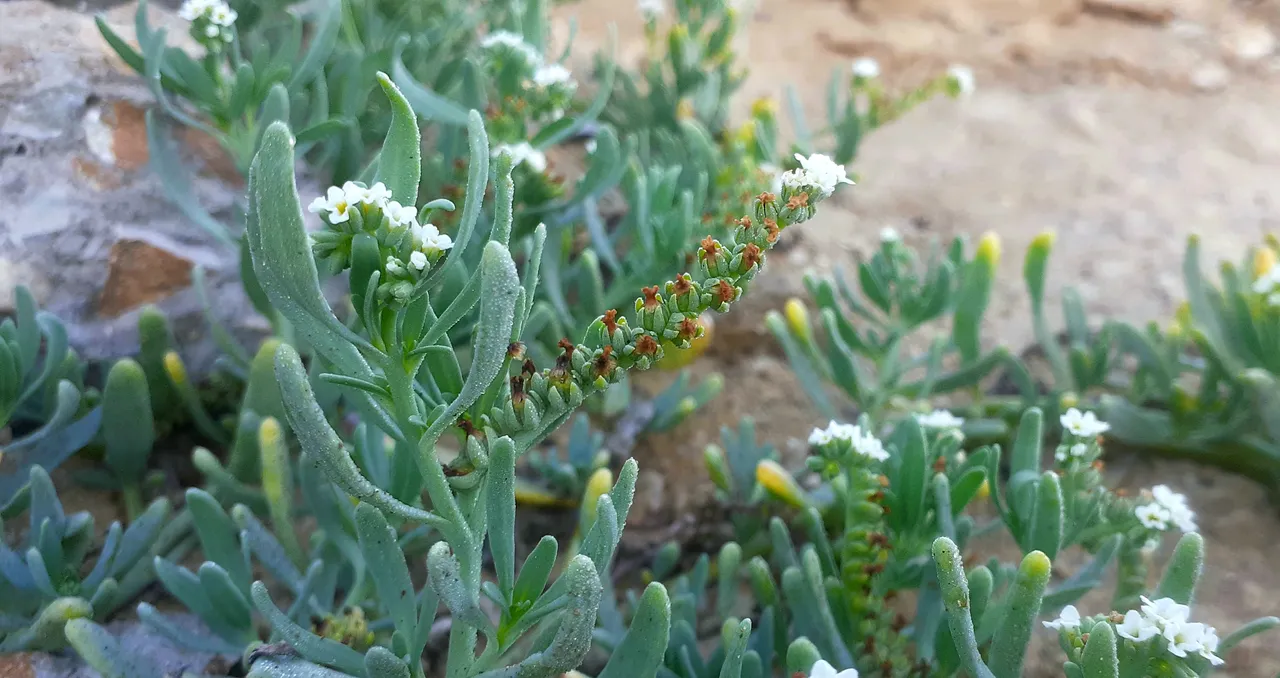
🇺🇸 Happy Saturday dear friends of #AmazingNature. As a good nature lover that I am, every time I leave home, I carefully admire the trees, bushes, flowers and in general any plant that I find along the way.
On one of the beaches that I visited a few days ago in the city of Porlamar, on Margarita Island, I came across these tiny, precious and flowery plants. Its leaves seemed velvety, a very beautiful olive green. It caught my attention because of its mini size and because it grew on a mixture of sand and earth, between stones, a few meters from the beach.
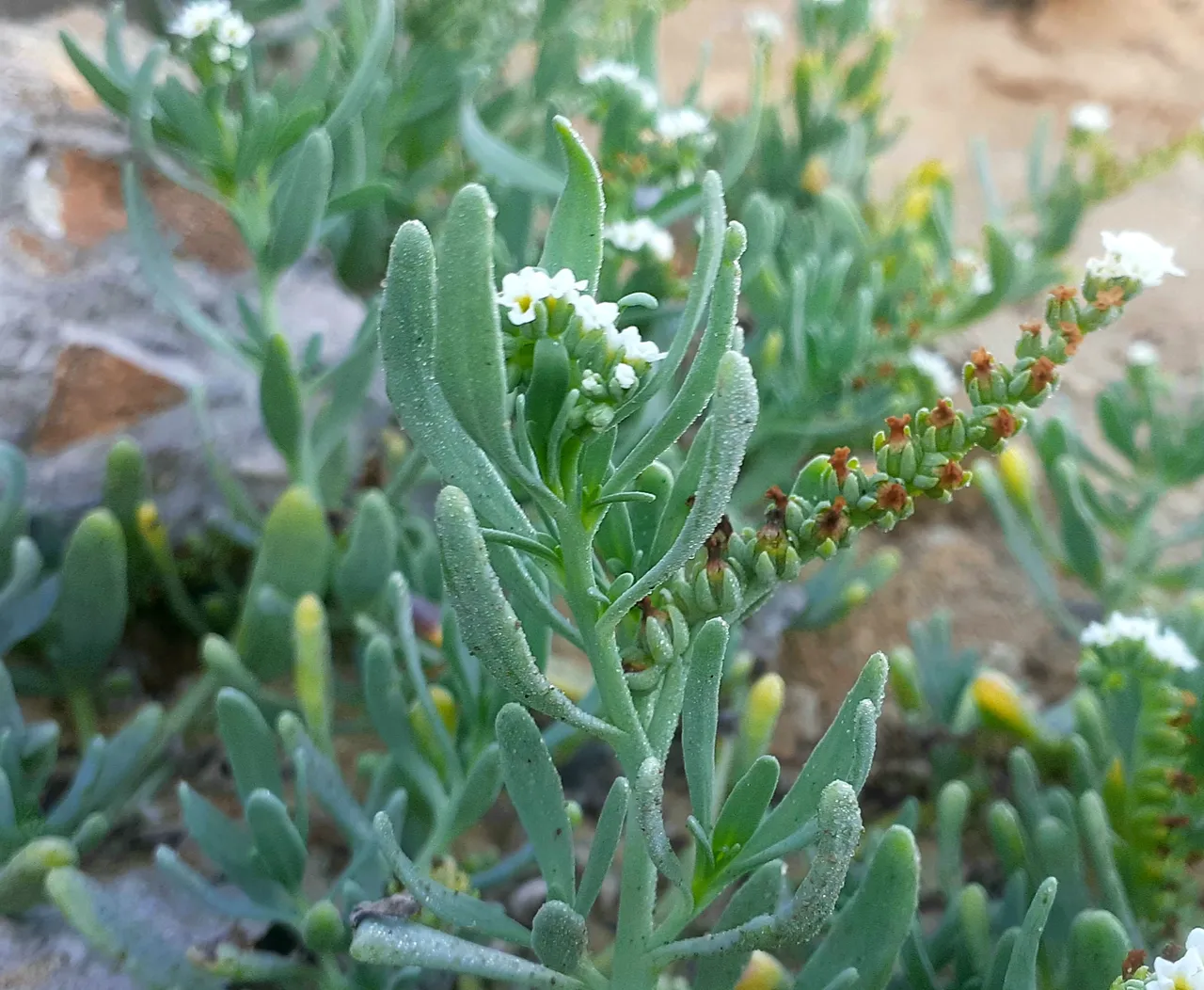
I did some research on them and found that their scientific name is "Heliotropium curassavicum". This plant belongs to the Boraginaceae family, it is native to America and we can see it in almost all the countries of this continent, from Canada to Argentina. They can also be found on other continents as it is common for many different species to be used anywhere in the world. It is commonly known as sea or beach scorpions, yerba del cristal, rooster's comb or scorpion tail, all of these names have seemed very original to me, and defining my favorite is "Sea scorpions".
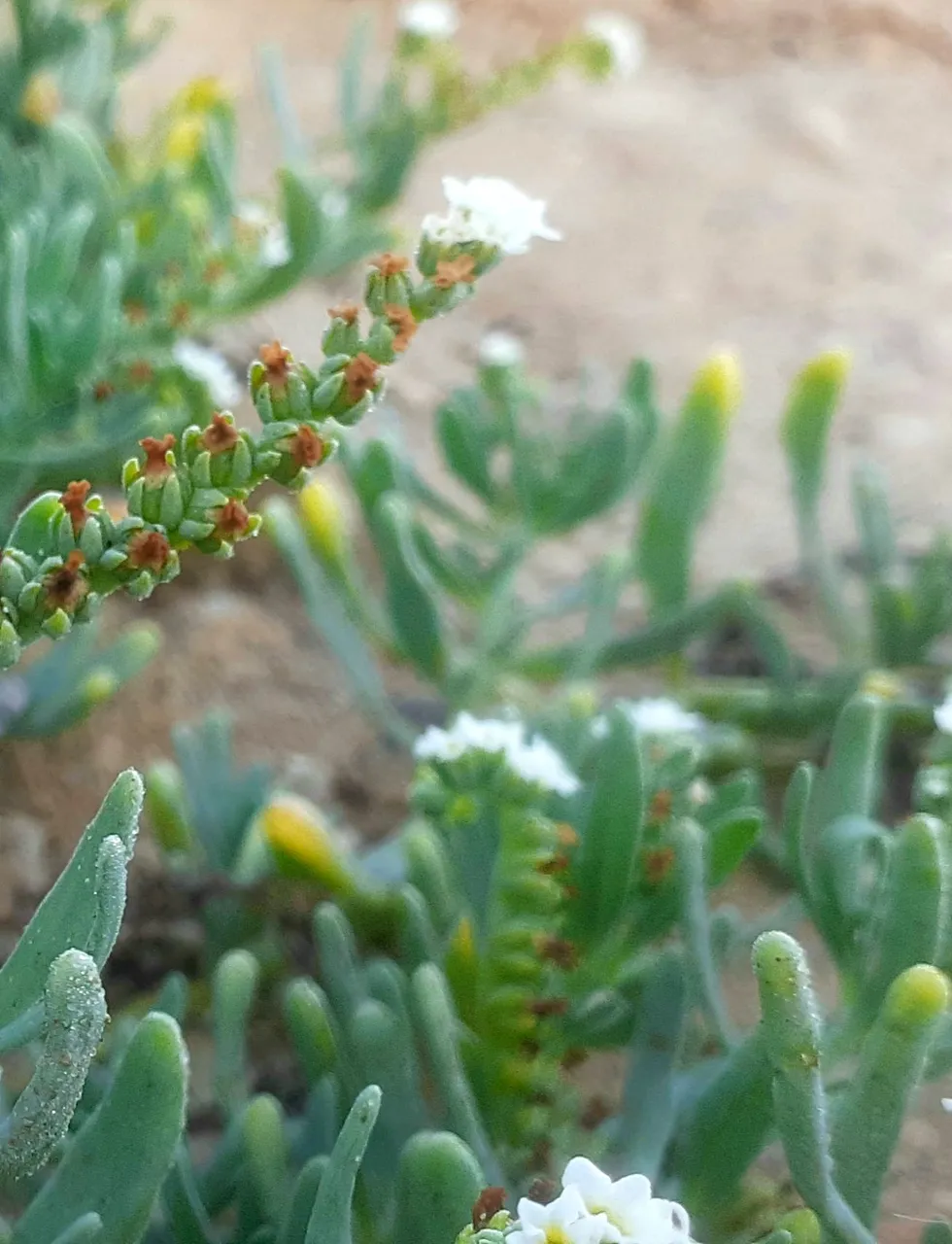
They generally grow in brackish soils, like beach sand and alkaline soils, which is what I observed when I saw them and it really caught my attention. It can grow throughout the year, and occurs in the form of a vine or a small bush. The stem and its leaves without fleshy and thick, with beautiful white and purple or yellow flowers. I hope you enjoy this beautiful plant that I share with you today and I have never seen before. Did you know it?
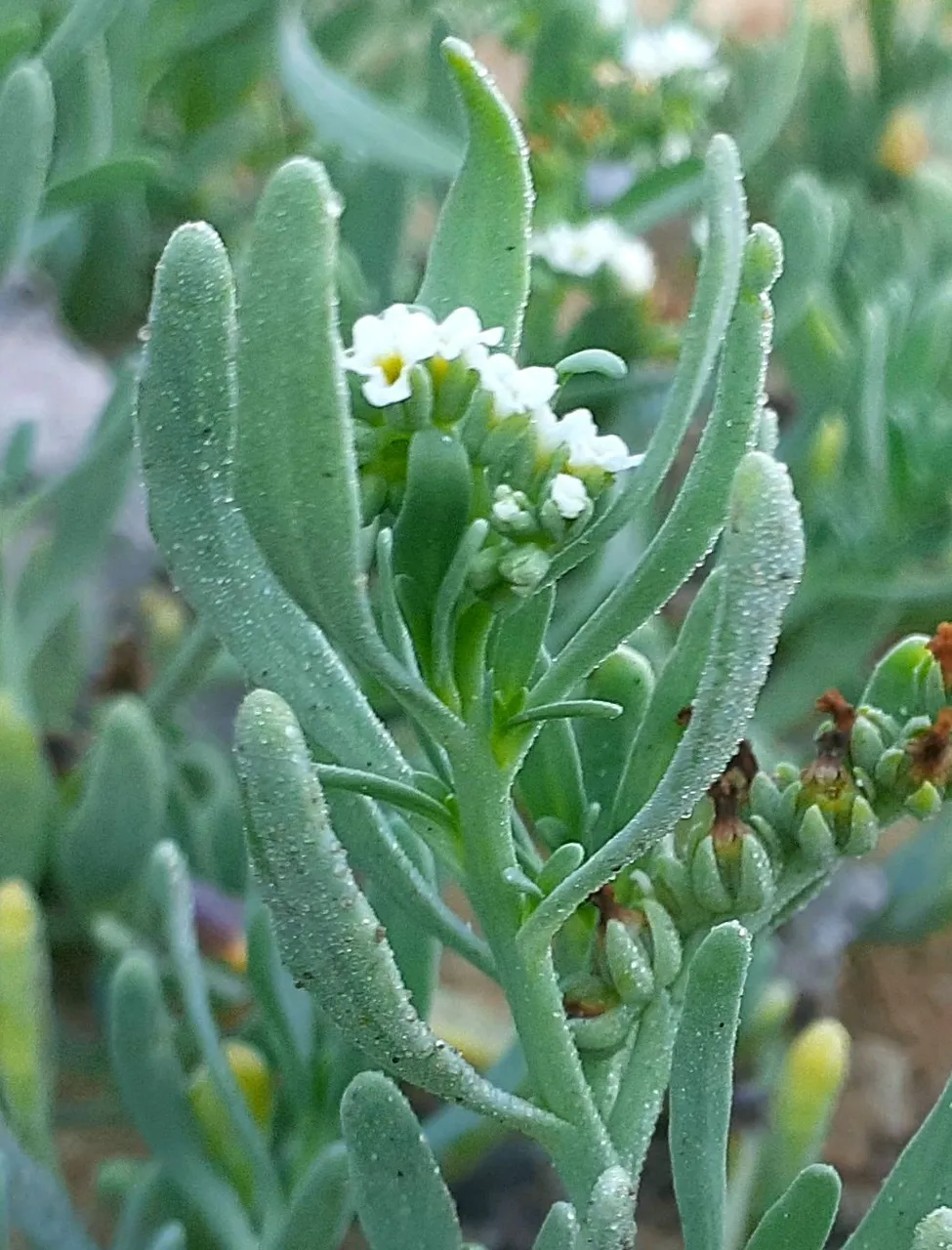
Thank you for joining me, visiting my blog, reading and supporting me. Have a wonderful day full of good energy!
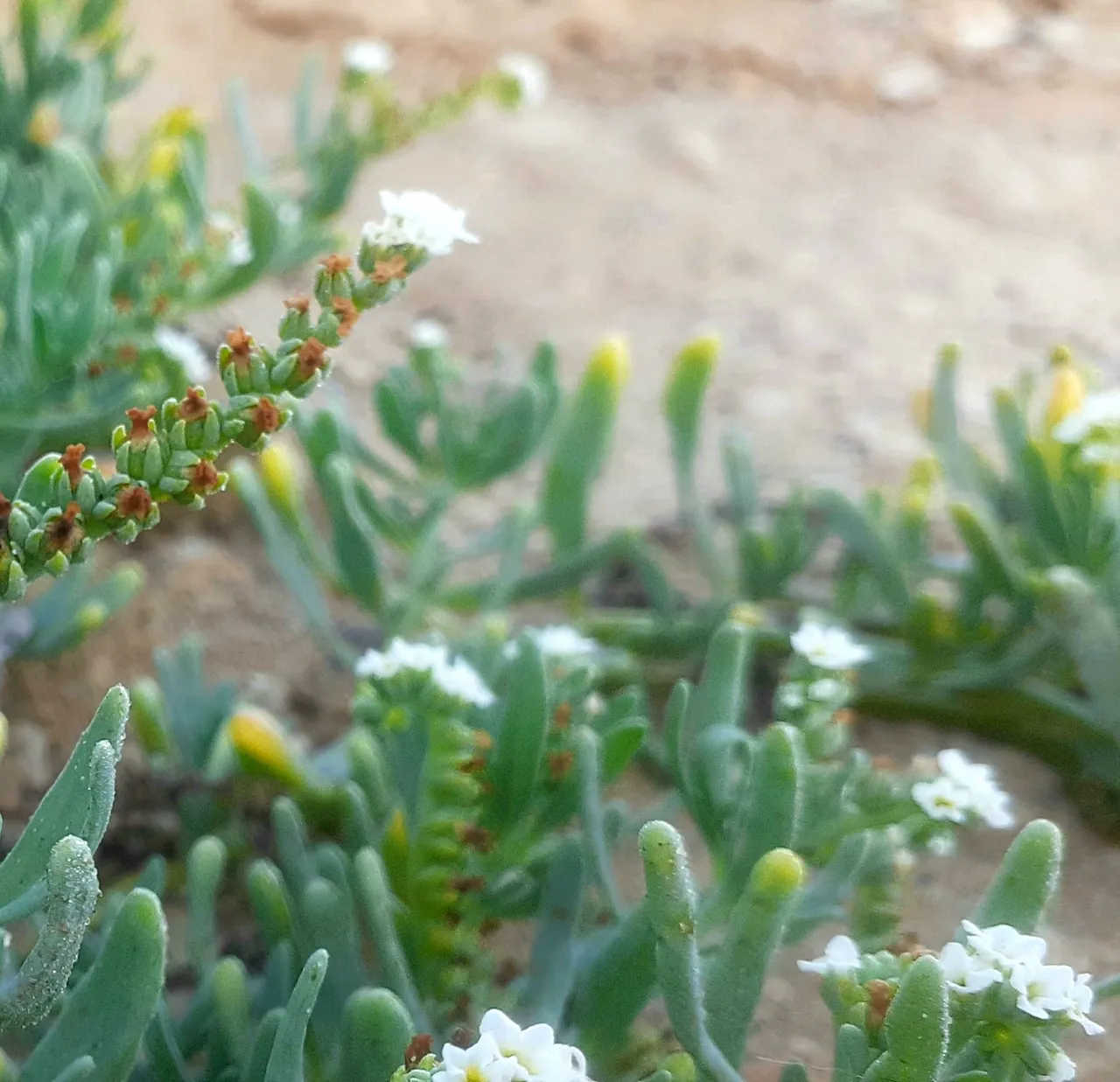
Photo information
Author: @Karbea
Camera and editing: Samsung Galaxy A20
Location: Margarita Island, Venezuela
English translation with Google Translate.
🇻🇪 Feliz sábado estimados amigos de #AmazingNature. Como buena amante de la naturaleza que soy, cada vez que salgo de casa, admiro con detenimiento los árboles, arbusto, flores y en general cualquier planta que me voy encontrando en el camino.
En una de las playas que visité hace unos días atras en la ciudad de Porlamar, de la Isla de Margarita, me topé con esta plantitas diminutas, preciosas y floreadas. Sus hojas parecían aterciopeladas, de un verde oliva muy hermoso. Me llamó mucho la atención porque por su tamaño mini y porque crecían sobre una mezcla de arena y tierra, entre piedras, a pocos metros de la playa.
Investigué un poco sobre ellas y me encontré que su nombre científico es "Heliotropium curassavicum". Está planta pertenece a la familia de las boragináceas, es nativa de América y la podemos ver en casi todos los países de este continente, desde Canadá hasta Argentina. También pueden encontrarse en otros continentes ya que es común que muchas especies diferentes sean introducidas en cualquier parte del mundo. Es conocida comunmente como alacrancillo de mar o de playa, yerba del vidrio, cresta de gallo o cola de alacrán, todos estos nombres me han parecido muy originales, y definir mi favorito es "Alacrancillo de Mar".
Generalmente crecen en suelos salobres, como la arena de la playa y pisos alcalinos, que fue lo que observé cuando las vi y llamó poderamente mi atención. Puede crecer durante todo el año, y darse en forma de enredadera o pequeño arbusto. El tallo y sus hojas sin carnosos y gruesas, con bellas flores blancas y púrpura o amarillo. Espero que disfruten esta linda planta que les comparto hoy y nunca antes había visto ¿Ustedes la conocían?
Gracias por acompañarme, visitar mi blog, leerme y apoyarme ¡Qué tengas un día maravilloso lleno de mucha buena energía!
Información de la fotografía
Autor: @Karbea
Cámara y edición: Samsung Galaxy A20
Locación: Isla de Margarita, Venezuela
Traducción al inglés con Google Traductor.
